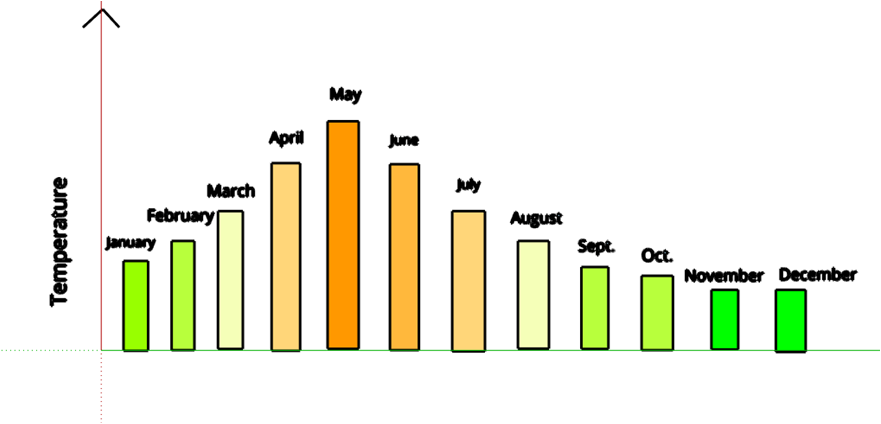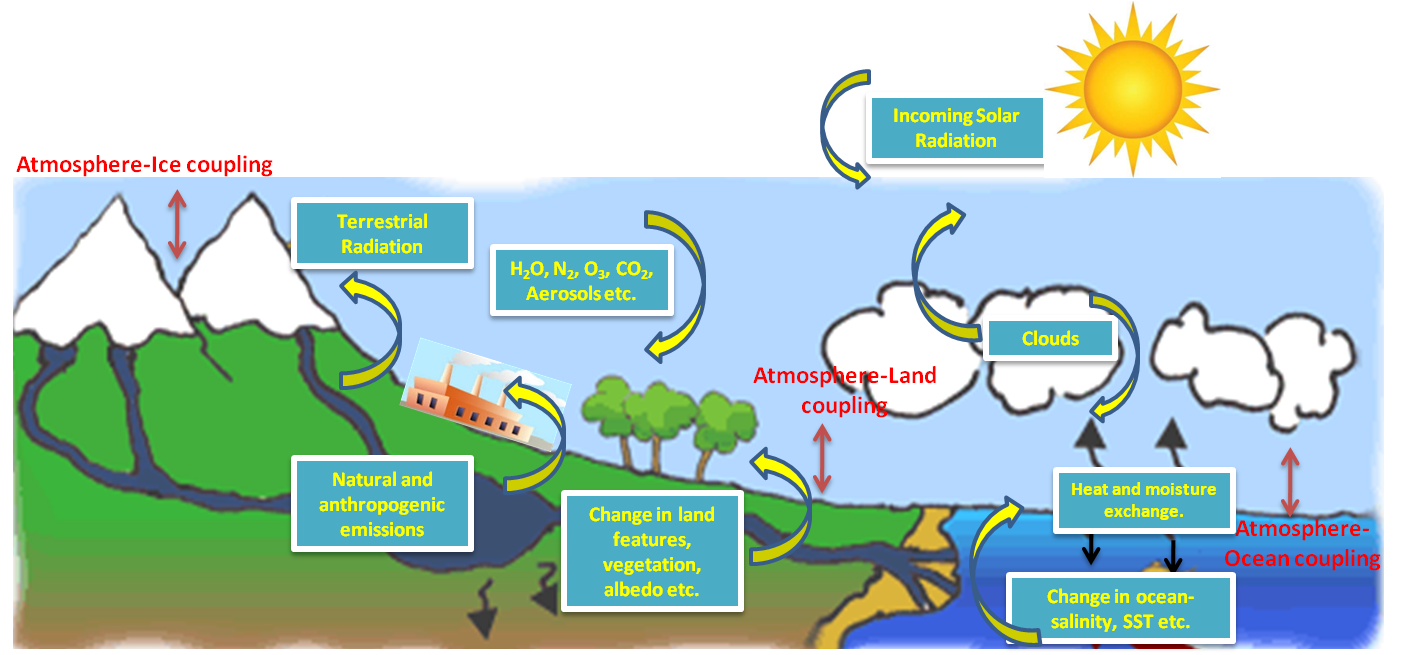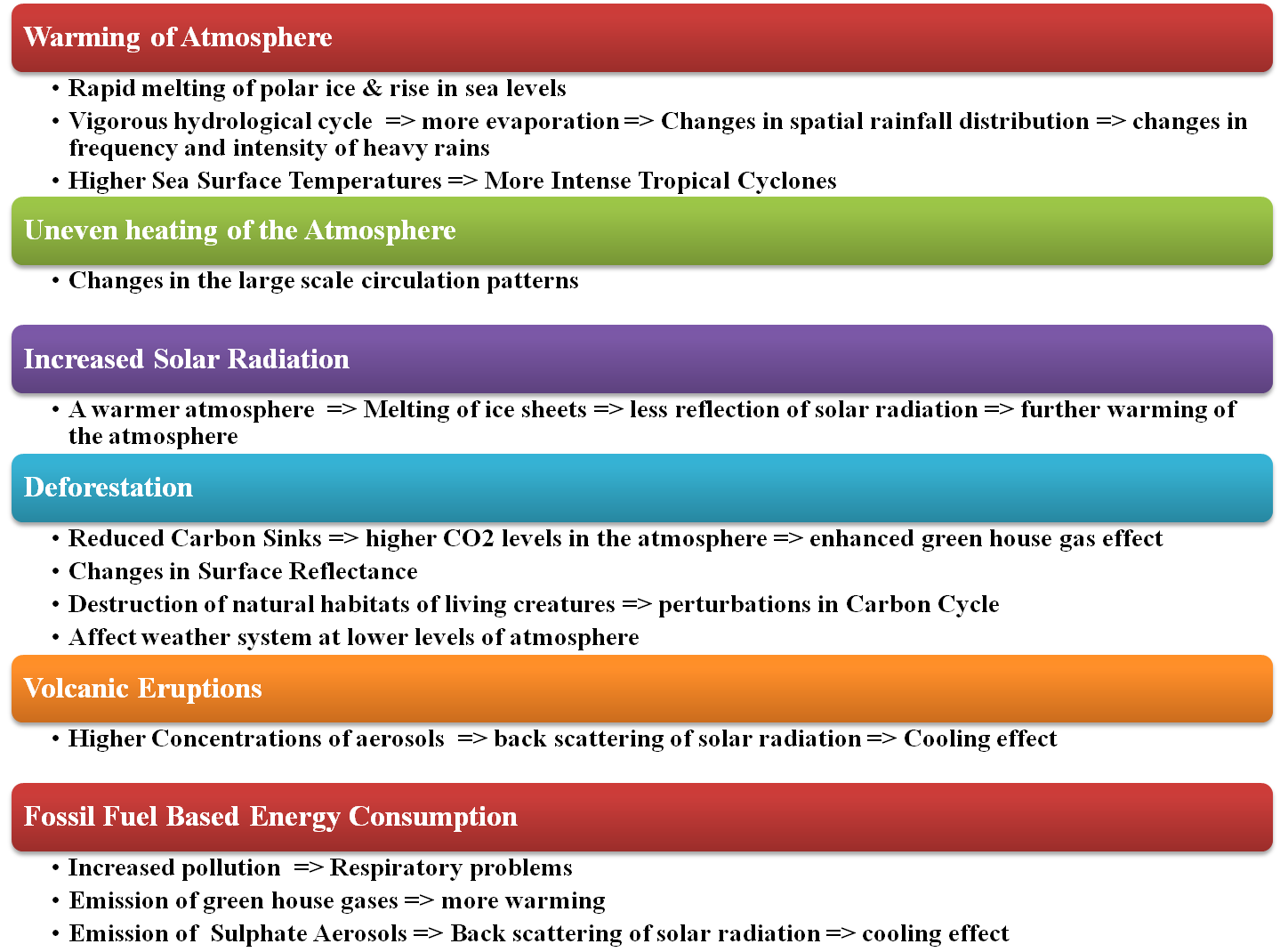Weather Vs Climate
Weather
We are more familiar with the daily weather forecasts on TV news channels; they are narrated as per the observed state of various meteorological parameters such as temperature, humidity, wind, cloudiness, rain (precipitation) and visibility. Weather at a place is the day-to-day swinging state of surrounding atmosphere. It can be described on a time scale from minutes to weeks. It is a result of various processes which happens on a short time-scale in our atmosphere, and hence it is more chaotic in nature to have its accurate forecast for more than one week into the future (climateprediction.net, 2014). Descriptions of weather at a place can address these questions: “Will it rain tomorrow?” “How humid is it right now?” “Will it be a sunny day ahead?”
Climate:
Climate of a place is the averaged behavior of weather for the long haul, usually observed for at least 30 years (National Geographic, 2019). These long term weather observations at a place helps us to discern normal weather pattern along with the weather extremes by employing various statistical measures (NSIDC, 2019). This statistical description may vary from simple measures like mean, mode, and median of long term observations to more complex measures of them, such as Climate Indices, for example Standard Precipitation Index (SPI), and North Atlantic Oscillation (NAO) Index (ICDC, 2019). Various regions of the globe have varying climates. Some regions have tropical wet climate (characterized by usual hot and rainy days); some have polar climate (characterized by cold and snow-cover throughout the year); and some may have dry and arid climate (characterized by least annual precipitation and higher temperatures).

Figure 1. In general, the climate of a region is shown with such graphs
Graphs (Figure 1) like this help us to understand the climate variation over a year at any place based on the long term meteorological observations. Let us say that above figure represents the temperature variation over a year for a city ‘A’. We can say that usually the climate of city ‘A’ is hot and sunny in the month of May. But, the weather on any individual day in May might be cool and rainy.
Climate at a place is decided by a climate system. Climate system is composed of five important subsystems:
- the atmosphere
- the hydrosphere (oceans, rivers, lakes etc.)
- the cryosphere (permanently frozen region- ice and glaciers)
- the geosphere (topographic features, rock, soil and land cover)
- the biosphere (sum total of living things on earth)

Figure 2. Simplified representation of a Climate System- showing mutual interplay between its sub-systems
Each of these subsystems is complex in nature and has a non-linear behavior on a distinct time scale varying from days to thousands of years. These subsystems interact with each other via many chemical, biological and physical processes (Figure 2). For example, the melting rate of glaciers and the extent of polar ice cover are sensitive to atmospheric temperature. Snow and ice have more albedo (the measure of the reflectivity of a material) than other dark-colored surface features on the earth. More warming of an atmosphere results in more melting of snow and ice, resulting into less reflection of incoming solar radiation, it will enhance absorption of incoming solar radiation, which in turn will cause further warming of the atmosphere (this is called a positive feedback).

Figure 3. Changes in components of Climate System and their impact on Climate.
Apart from the mutual interaction of these sub-systems, the Climate System is under a constant change due to variations in natural and anthropogenic external factors like solar radiation, volcanic eruptions, consumption of fossil fuels, and land use changes (Figure 3). Thus, the region’s climate is the overall state of the weather/climate system, considering a statistical description of its long term variation. In this manner the climate fluctuates more gradually and is fairly simpler to anticipate in contrast with the weather of a region.
References
climateprediction.net. (2014, June). Climate Science. University of Oxford, UK. https://www.climateprediction.net/climate-science/basic-science/
ICDC (Integrated Climate Data Center). (2019, March). Climate Indices. University of Hamburg, Germany. https://icdc.cen.uni-hamburg.de/climate-indices.html
National Geographic: Resource Library. Climate. Retrieved September 24, 2019. National Geographic Society, Washington DC, USA. https://www.nationalgeographic.org/topics/resource-library-climate/?q=&page=1&per_page=25
NSIDC (National Snow & Ice Data Center). (2019, October). All about Arctic Climatology and Meteorology. University of Colorado, Boulder, USA. https://nsidc.org/cryosphere/arctic-meteorology/climate_vs_weather.html


